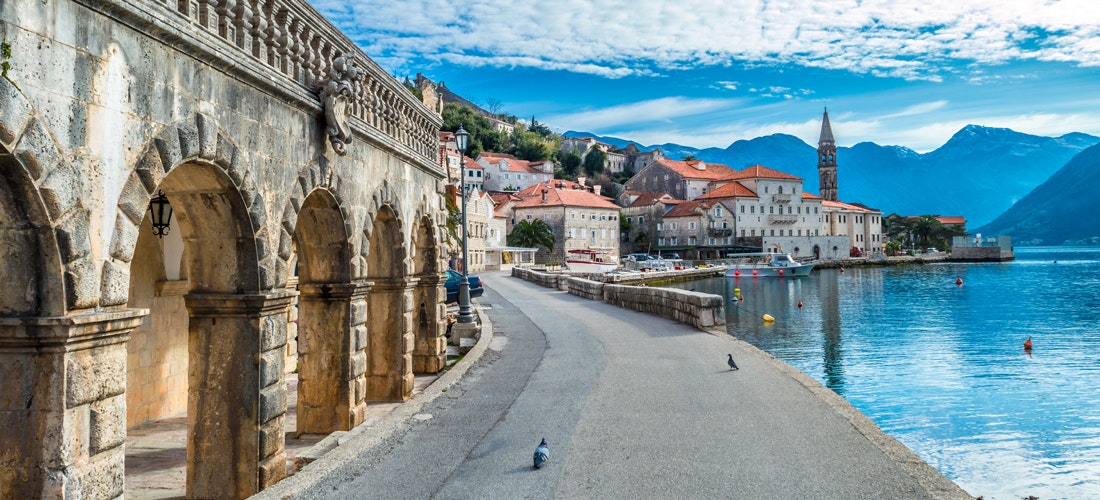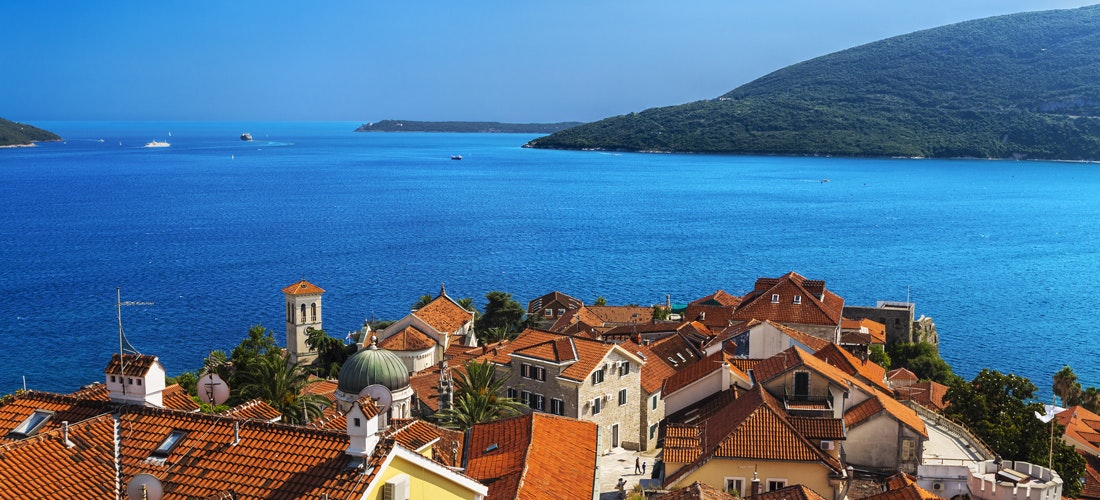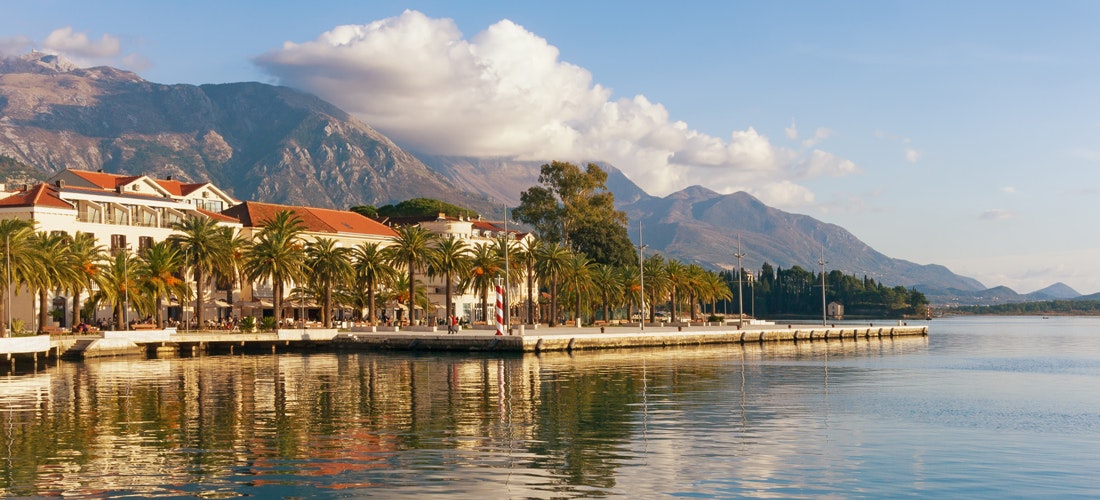Budva
Budva is the most popular tourist destination in Montenegro. Budva is situated in the wide Bay of Budva. The Lovćen and Pastrovići mountain ranges protect it from strong winds blowing from inland. The town’s history reaches back 2600 years when the town was, according to legend, founded by Cadmus, the son of a Phoenician king. The whole peninsula is surrounded by monumental fortifications dating back to the 14th century. The walls protect the citadel and the old town, you can walk around the whole town on them. Budva suffered during its troubled past, from sieges to a major earthquake in 1979. It does not excel in monuments of the highest order like Kotor, but it will charm you nonetheless with its special, Medieval town atmosphere. Seven castle gates lead into the city. The two most impressive are the Mainland Gate (Kopnena vrata) and the Sea Gate (Morska vrata), behind which you will find a maze of narrow little lanes, cafés, passages and little squares.
You can see the most beautiful historical monuments in the southern part of the old town. You will, for example, find the Church of St John the Baptist with a bell tower, the Bishop’s Palace, the Church of St Sava, and the fort with a Holy Trinity chapel. One of the oldest buildings is the Church of Our Lady which was built on the cape in 840 AD. In the northern part of the town is a modern gallery and the town museum where you can learn about the history of the town. The town has one of the best archaeological sites in Europe. Extensive ruins were discovered here from ancient and Greek times. Most of these ruins were uncovered by the major earthquake of 1979.
Budva is also famous for its beautiful beaches. Right by the citadel is Mogren Beach, which has been awarded a Blue Flag. This is made up of two parts linked by a path cut into the rock. Its length is roughly 400 m and the surface is rough sand. In the middle of the Bay of Budva is a long pebbled beach called Slovenska pláž. About 15–20 minutes north, is another lovely beach called Jaz.

Dukley Marina Budva
Budva Marina is one of the largest marinas to be found in Montenegro. It offers 300 mooring berths with connections to water and electricity, showers, and toilets. Connection to WiFi, a shop with groceries, and several cafés and restaurants will make mooring there well worth it. There is also a doctor and pharmacy in town. Mooring here in high season (May to end of September) is relatively expensive and frequently fully occupied. For a 12 m boat, you will pay EUR 66, for a 14 m boat EUR 80, for a 15 m boat EUR 87, and for a 17 m boat EUR 107.
When navigating into the harbour, the best approach is from the southwest with the island of Sveti Stefan (St Stephen) about 250 m to starboard, and then you enter the channel marked with buoys (depth of the channel is 5 m). Access from the southeastern side is not recommended. There are shallows and rocks there. If a strong Bora is blowing, the channel into the harbour is unnavigable. It is possible however, to anchor in front of the entrance (depth of 8 m) to the marina. It is quite windy in the marina, but the sea is calm. There is also a fuel station here.




